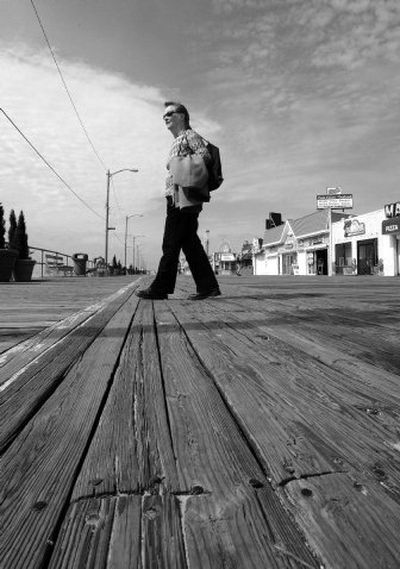Rain forest wood for boardwalk stirs city debate

OCEAN CITY, N.J. – It looks good, lasts for decades and can support the weight of a police car or fire engine, not to mention thousands of people. With those qualities, wood from tropical rain forests has become a favorite for building and repairing boardwalks.
But the trend is upsetting environmentalists, who favor synthetic materials or wood from trees that didn’t grow in endangered areas.
And while Ocean City tried to do the right thing by seeking $1.2 million worth of Brazilian wood certified as having been harvested responsibly, the flap that has arisen highlights a fundamental question involving rain forests: Is there such a thing as good logging in places such as the Amazon?
“Every second, 1.5 acres of rain forest is lost, and with it, thousands of plants and animals and habitat for the humans living there,” said Georgina Shanley, a local environmentalist.
Officials in this south Jersey beach town say they need ipe hardwood – Brazil’s top timber export – for boardwalks that will bear the weight of its large summer crowds, support emergency vehicles and withstand the onslaught of moisture and salt from the ocean.
The issue first arose 10 years ago when Ocean City scrapped an idea to use tropical rain forest wood on its 2 1/2-mile long boardwalk that had been built out of domestic yellow pine and ipe. The City Council passed a resolution in May 1997 declaring it would no longer purchase tropical rain forest hardwood for the boardwalk because it could not be sure it was harvested in an environmentally safe manner.
Now, however, the city is seeking wood from suppliers who have obtained certification from the Forest Stewardship Council, a group of industry and environmental groups who seek to improve forestry management practices. Certification means that loggers operate in ways designed to damage the ecosystem as little as possible, including not over-harvesting or wasting trees.
Scott Paul, a rain forest expert with Greenpeace, calls the certification “the Good Housekeeping seal of approval for forest management.” Greenpeace was one of the founding members of the forestry council.
But Tim Keating, executive director of Rainforest Relief, a New York volunteer group that opposes the use of rain forest wood, said the forest council’s standards do nothing to ensure that rain forests can be sustained for future generations.
“What I’m opposed to is the suggestion that the answer to bad logging is always better logging rather than no logging,” Keating said. “Is wood from far away always the answer?”
Sustainability is a priority, said Katie Miller, a spokeswoman for the forestry council. “Part of it is to make sure these forests continue to grow,” she said.
The city sought bids for 68,000 board-feet of ipe wood, which Shanley said is equivalent to 1,000 acres of rain forest. But it did not get any bids from vendors, who may have been confused about the complex specifications surrounding the request, said Jim Rutala, Ocean City’s business administrator.
It will try again soon, and hopes to have the wood delivered by the end of the summer for installation during the winter.